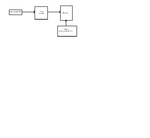rahulloveselectronics
Junior Member level 1
Hello,
I need to design a frequency counter, where my input frequency will be less than 3Mhz (square wave input). I have seen many microcontroller based implementation. But this frequency counter is part of my ASIC design, so I wanted to design it using CMOS. Can someone help me out.
Thanks in advance!
I need to design a frequency counter, where my input frequency will be less than 3Mhz (square wave input). I have seen many microcontroller based implementation. But this frequency counter is part of my ASIC design, so I wanted to design it using CMOS. Can someone help me out.
Thanks in advance!
